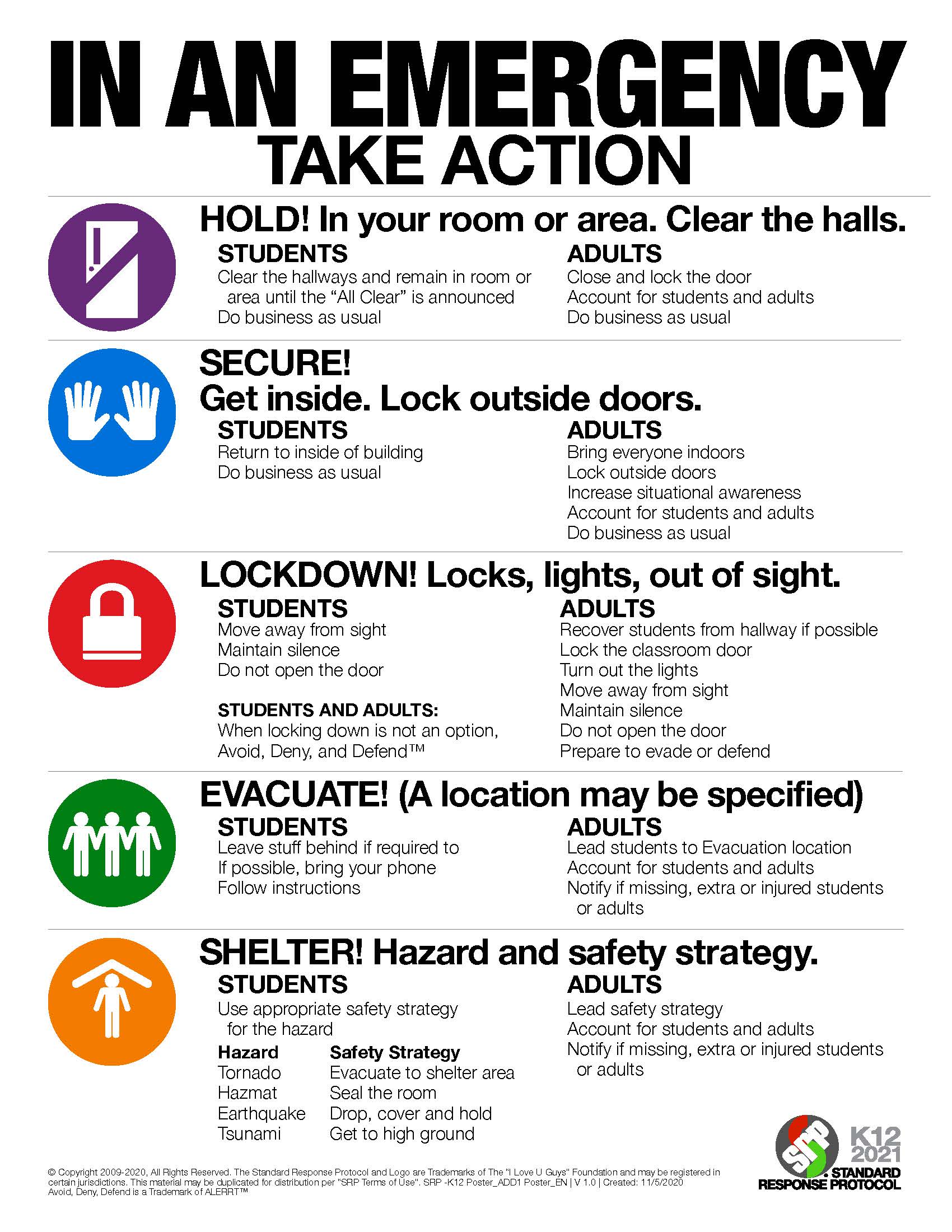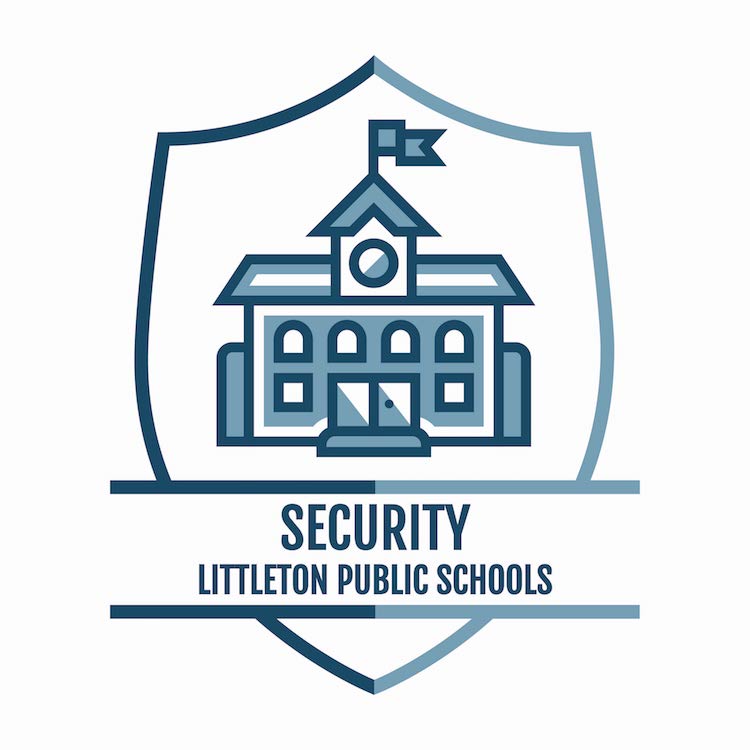School Safety Protocols
Littleton Public Schools Standard Response Protocols Video
Keeping our schools safe and secure creates complex challenges. No single action by itself can make our schools safe, so protecting students and staff is a tremendous responsibility that requires a comprehensive approach. The training that students and staff receive about the district’s safety processes, plans, technologies and procedures empowers them to take effective action in emergencies.
The Littleton Public Schools Standard Response Protocol video is being shown to all current LPS students in Grades 6–12. The eleven-minute video explains the Five Security Protocols (Hold, Secure, Lockdown, Evacuate, and Shelter) that are used by the district to manage situations that may occur in or around a school building while school is in session. It complements and helps reinforce the training students have been receiving and the drills LPS students have been practicing for years.
* For Spanish, start the video, click on the cc box at the bottom right, and select Spanish.
(* Para ver el video en español, empiecen el video, hagan click en las letras “cc” a la derecha de la parte baja y elijan “Spanish”.)
* For Spanish, start the video, click on the cc box at the bottom right, and select Spanish.
(* Para ver el video en español, empiecen el video, hagan click en las letras “cc” a la derecha de la parte baja y elijan “Spanish”.)
The Standard Response Protocol
The Standard Response Protocol was developed by the I Love U Guys Foundation. The protocols are used in over 30,000 schools and municipalities nationwide. They were created through research-based best practices of school administrators, psychologists, public safety experts, families, and first responders. The Standard Response Protocol creates common and consistent language among educators, communities, and first responding agencies.
Depending on the circumstances, a protocol may be implemented without any school functions being disrupted, while others may necessitate changes in dismissal times and might involve local emergency services. We are prepared to care for your children in all of these situations. When we work together, we are all safer.
- HOLD is initiated when there is a safety concern in the hallways of the building when it is necessary to restrict movement within the school. Examples that may prompt a HOLD being called include a medical emergency or a physical altercation occurring in the hallway.
- SECURE is initiated when there is a threat outside the building. A SECURE is often implemented due to emergency situations that take place in the neighborhood close to the school. Examples that may prompt a SECURE being called include a bank robbery nearby, police activity, or a dangerous animal in the area.
- LOCKDOWN is used when there is an active threat or dangerous incident on campus. Students and staff must find immediate shelter inside the nearest classroom as quickly as possible. Lock the door and turn out the lights. Stay out of the line of sight and gather in a space so someone in the hallway couldn't see you when looking through a doorway. Huddle behind large items for extra protection, and consider barricading the doorway if it can be done quickly. Be very quiet. Be prepared to move quickly. Don't open the door for anyone--stay until law enforcement comes to your classroom and leads you to safety.
- EVACUATE is used to get students and staff out of the building by a route designed to avoid contact with a potential threat, such as a suspicious package, a threatening person in a specific confined area, a bomb threat, or a hazardous material spill. An EVACUATION protects staff and students from a threat where the exact location in the building is known.
- SHELTER is issued for severe weather or hazardous material incidents. A SHELTER directive is used to relocate students and staff to a safe area away from potential weather- or HAZMAT-related danger.
Parents: we need your help!
- Please review your contact preferences in Infinite Campus Parent Portal to make sure your contact information is accurate and that you have selected to receive text and email messages from LPS.
Parents will usually receive communications when these protocols are implemented. Please remember that the first priority is to ensure the safety of students and staff. We will communicate with parents as quickly as possible once that has been achieved. We appreciate our parents' patience, as we want to provide acccurate information that can take a little bit of time to gather. - Monitor the LPS website for updates and instructions.
In an effort to reduce confusion and the spread of misinformation, LPS will usually post information and updates on the website once we know the information is accurate.
It is likely that information and misinformation will be on social media and reported through mainstream media before you receive communication from LPS.
Our first priority is to make sure students and staff are safe and that their needs are being met. Then, once we have accurate information, we will share it with parents. Sometimes this takes a little time; please be patient. - Please don’t call the school during an emergency -staff members are focused on student safety.
- Please don’t call your child at school during an emergency.
Students’ attention should be focused on their teacher’s instructions and what’s being asked of them at that moment.
If your child calls you during an emergency, please help them stay calm and remind them to listen to their teacher and follow directions. Don’t share information with them unless you know for certain it is accurate. Doing so only adds to your child’s confusion. - Don’t drive to the school during an emergency - the streets need to be open for response personnel to safely arrive.
- LPS will always give you instructions when dismissal times and/or procedures are affected by security protocols.
Because each situation is different, sometimes these alternate dismissal plans take a bit of time to finalize; please be patient. - LPS staff will always stay with students until parents can pick them up.
Rest easy knowing your child is safe until you get there.


